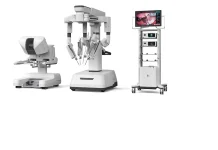A group of doctors and researchers from Gustave Roussy, Université Paris-Saclay, the Bicêtre Hospital – AP-HP, the French Institute for Research in Computer Science and Automation (INRIA) and the start-up Owkin have developed a new AI-based severity score that can predict outcomes for COVID-19 patients as soon as they are diagnosed.
Its open source code has been published in the review Nature Communications. The progression of COVID-19 in patients varies greatly. Being able to predict a patient’s risk of deterioration at diagnosis, i.e. whether they will require respiratory assistance or need to be transferred to intensive care, is imperative.
The new AI tool produces a severity score that combines a range of variables to predict the patient’s progression. Calculating the score takes two to three minutes and can be given to doctors at the same time as the scan report for each patient assessed. The tool has recently been clinically implemented within Gustave Roussy’s Radiology Department.
Ranging from 1 (for the lowest risk) to 5 (for the highest risk), the score alerts doctors and allows them to adapt how the patient is monitored to anticipate deterioration.
The severity score was developed as part of the ScanCovIA study led by Prof Nathalie Lassau, radiologist at Gustave Roussy, and conducted in close collaboration with teams from Gustave Roussy, Université Paris-Saclay, the Bicêtre Hospital – AP-HP, INRIA and Owkin.
The study is based on the cross-analysis of various clinical, biological and radiological variables using artificial intelligence. The study also makes use of a key tool – chest CT scans, which assess the extent and nature of lesions in the thorax and diagnose lung damage.
The deep learning AI model was trained and then validated on over 1,000 patients, simultaneously analysing and combining heterogeneous data from CT scans, clinical and biological data, as well as patients’ medical history and comorbidities. Of the 65 variables analysed, five proved to be particularly important in determining the prognosis: oxygen saturation, platelet counts (medullary function index), urea (renal impairment), age and gender.
By combining these five variables and CT scans, the tool is able to accurately calculate a severity score that can categorise patients according to their possible outcome, the likelihood of them being transferred to intensive care, and whether they will require respiratory assistance. The tool helps doctors answer essential questions related to urgent care and predict patients’ needs and therapeutic options.
The Radiology Department at Gustave Roussy has been using the tool for the past month.




